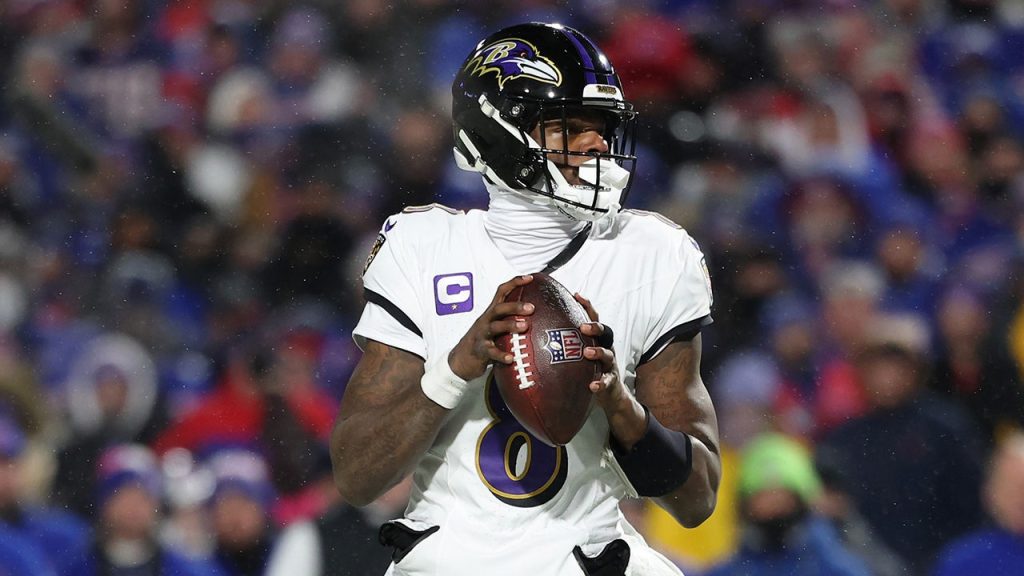The Baltimore Ravens’ agonizing playoff exit against the Buffalo Bills ignited a heated debate about culpability, centering around a failed two-point conversion attempt that could have tied the game late in the fourth quarter. Tight end Mark Andrews, a three-time Pro Bowler, bore the brunt of the criticism for dropping the crucial pass from quarterback Lamar Jackson. However, former NFL quarterback and analyst Chris Simms argued that the blame should not rest solely on Andrews’ shoulders, asserting that Jackson’s inaccurate and delayed pass significantly contributed to the play’s failure.
Simms meticulously dissected the play, acknowledging Andrews’ dropped catch but emphasizing the flaws in Jackson’s execution. While recognizing the need for Andrews to secure the ball, Simms contended that Jackson, as a highly paid quarterback earning $55 million annually, should have delivered a more accurate and timely throw. He described Jackson’s pass as a “double-clutched dart,” thrown late and behind Andrews, making the catch unnecessarily difficult. This critique underscores the expectation of precision and decisiveness from a quarterback of Jackson’s caliber, especially in high-stakes situations.
Further bolstering his argument, Simms praised Ravens offensive coordinator Todd Monken’s play design, labeling it the “perfect call.” This exoneration of Monken reinforces Simms’ conviction that the failure stemmed from the execution, specifically Jackson’s throw, rather than a strategic flaw. He envisioned a post-game scenario where both Andrews and Jackson would receive negative feedback in their respective meetings with coaches – Andrews for the drop and Jackson for the subpar throw.
The play’s breakdown, according to Simms, began with Jackson’s hesitation and culminated in a pass that lacked the characteristic authority and precision typically associated with the two-time NFL MVP. By throwing late and off-target, Jackson, in Simms’ view, amplified the difficulty of the catch for Andrews, essentially turning a relatively straightforward play into a challenging one. This analysis suggests that even if Andrews had caught the ball, the degree of difficulty imposed by the throw itself warranted scrutiny.
Beyond the two-point conversion, the game featured other critical errors that contributed to the Ravens’ downfall. Jackson threw one interception and the team lost two fumbles, one of which was attributed to Jackson himself. Andrews also fumbled in the fourth quarter, adding to the Ravens’ woes. This broader context highlights that the blame for the loss cannot be attributed to a single play or player. The cumulative effect of multiple turnovers and missed opportunities ultimately sealed the Ravens’ fate.
In the aftermath of the game, Jackson exhibited leadership by deflecting blame away from Andrews, emphasizing the team’s collective responsibility for the outcome. This gesture, while commendable, did not quell the debate surrounding the pivotal two-point conversion. Simms’ analysis offered a nuanced perspective, shifting some of the focus from Andrews’ dropped catch to Jackson’s execution of the throw. While acknowledging Andrews’ responsibility to secure the ball, Simms insisted on a more balanced assessment, holding Jackson accountable for his role in the failed play. This analysis highlights the complexities of evaluating performance in high-pressure situations, where even slight deviations from optimal execution can have significant consequences.

